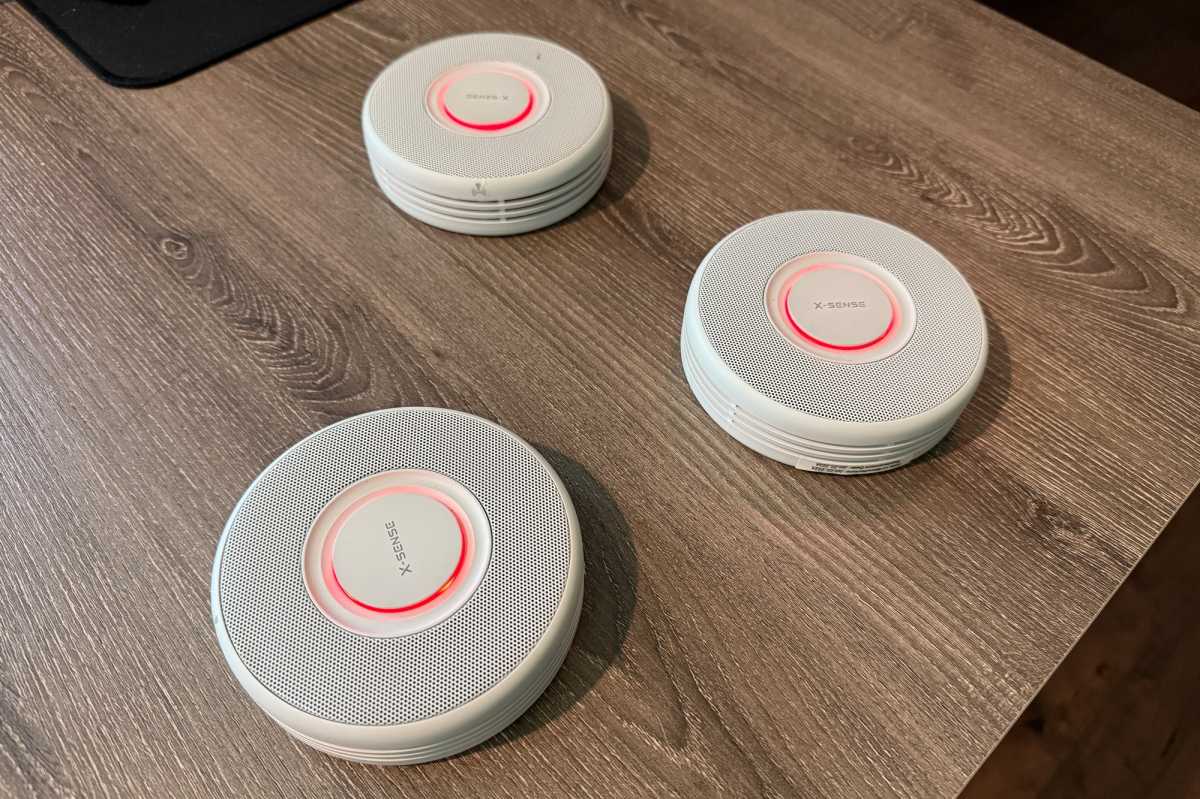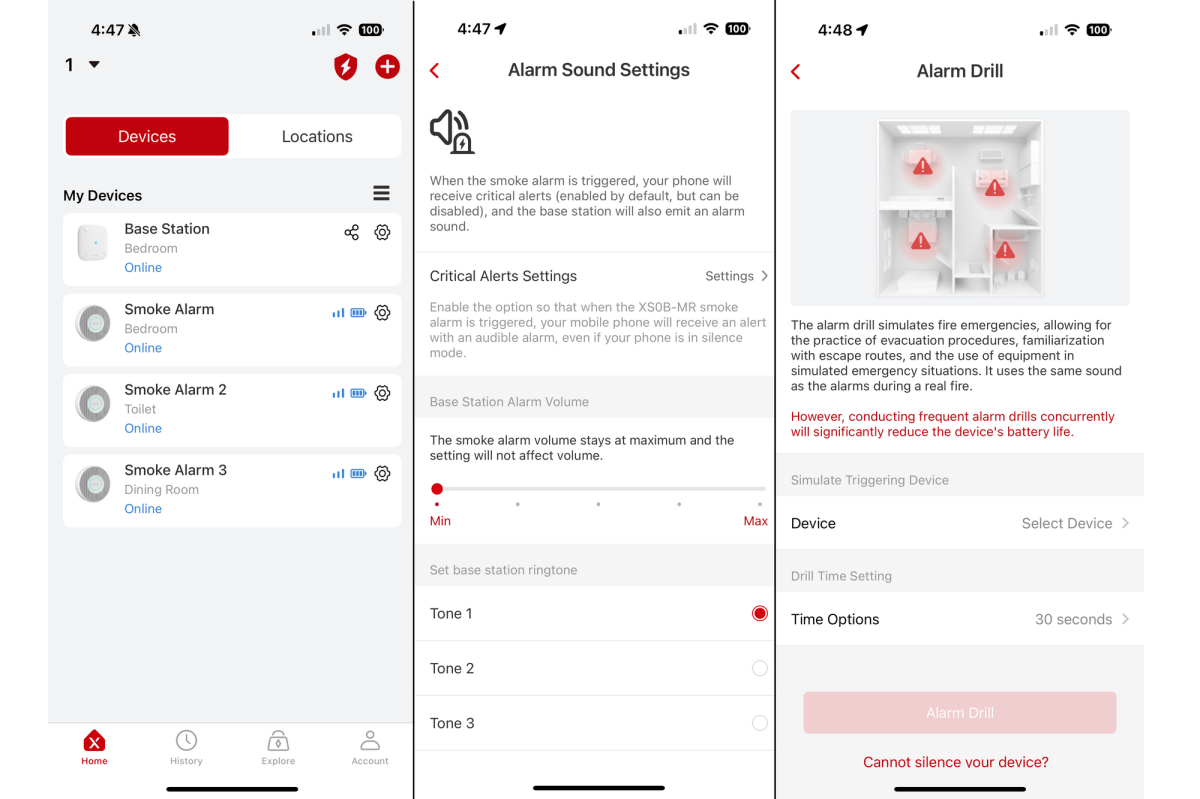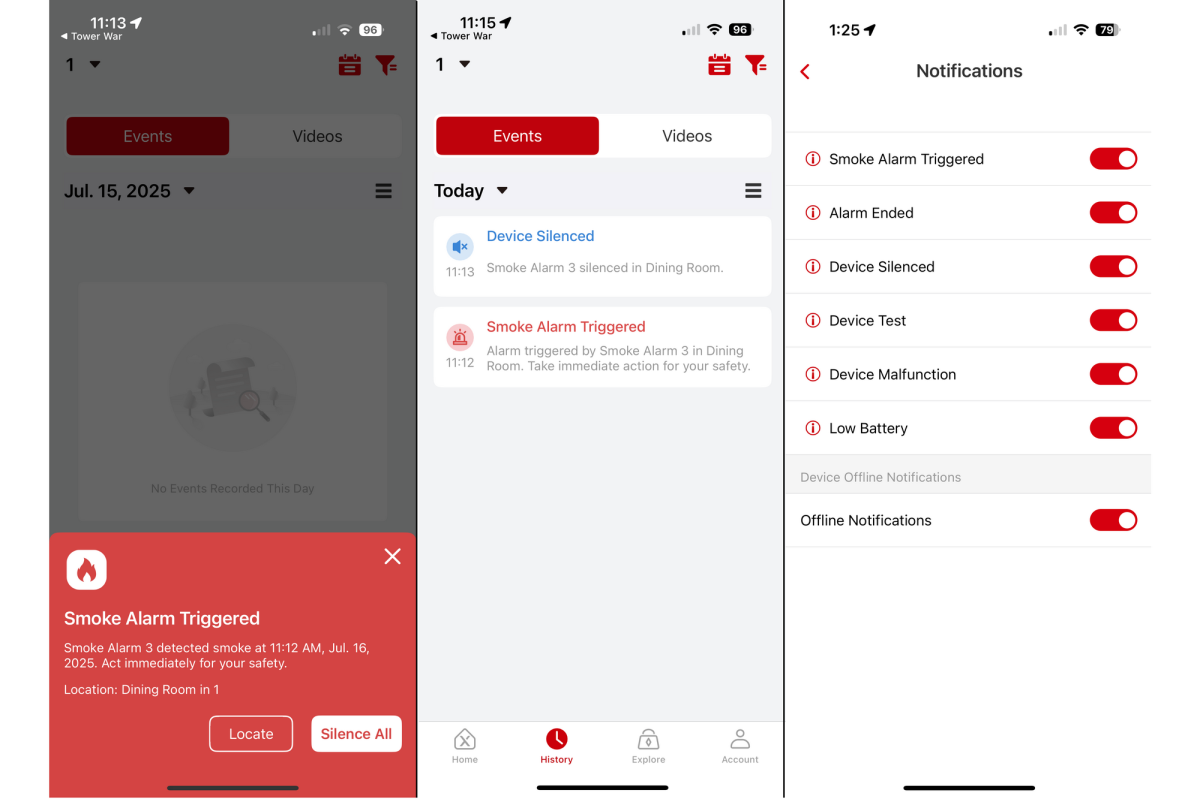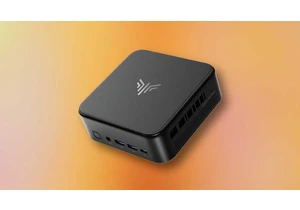At a glance
Expert's Rating
Pros
- Voice alerts inform you which room smoke has been detected in
- Interconnectivity for local alarms works great, whether your Wi-Fi network is up or not
- Zero operational trouble problems encountered during the review
Cons
- Doesn’t detect the presence of carbon monoxide
- No battery backup on the hub; any power outage means no push notifications
- Detectors are larger and less attractive than the ones in X-Sense’s FS31 system
Our Verdict
The satellite smoke alarms in this MR31 system are larger and more dated than those in X-Sense’s petite FS31 system, but the addition of voice alerts adds extra peace of mind.
Price When Reviewed
This value will show the geolocated pricing text for product undefined
Best Pricing Today
<h3 class="review-best-price" id="best-prices-today-x-sense-xs0b-mr-interconnected-smart-smoke-alarm">
Best Prices Today: X-Sense XS0B-MR Interconnected Smart Smoke Alarm </h3>
<div class="wp-block-price-comparison price-comparison ">
<div id="New" class="new_products_tab tabcontent">
<div class="price-comparison__record price-comparison__record--header">
<div>
<span>Retailer</span>
</div>
<div class="price-comparison__price">
<span>Price</span>
</div>
</div>
<div class="price-comparison__record check_on_amazon">
<div class="price-comparison__image">
<img decoding="async" src="https://www.pcworld.com/wp-content/themes/idg-base-theme/dist/static/img/amazon-logo.svg" alt="amazon" loading="lazy" />
</div>
<div class="price-comparison__price"></div>
<div>
<a class="price-comparison__view-button" href="https://www.amazon.de/s?k=X-Sense+XS0B-MR+Interconnected+Smart+Smoke+Alarm">Check</a> </div>
</div>
<div class="price-comparison__record price-comparison__record--footer">
<span class="price-comparison__footer-text">
Price comparison from over 24,000 stores worldwide </span>
</div>
</div>
<div id="Refurbished" class="refurbished_products_tab tabcontent">
<div class="refurbished-padding price-comparison__record price-comparison__record--header">
<div>
<span>Product</span>
</div>
<div class="price-comparison__price">
<span>Price</span>
</div>
</div>
<div class="price-comparison__record price-comparison__record--footer">
<span class="price-comparison__footer-text">
Price comparison from Backmarket </span>
</div>
</div>
</div>
<div class="review-software-price">
<div class="software-product-chart-main">
<div class="software-product-chart-pricing">
<div class="product-chart-item__pricing-details">
<div class="software-product-chart-pricing">
<span class="product-chart-item__pricing-details--links-wrapper">
<span class="not-amp">
<div class="software-product-chart-buttons "><div class="item-pricing-details"></div></div> </span>
</span>
</div>
</div>
</div>
</div>
</div>X-Sense’s XS0B-MR31 Interconnected Smart Smoke Alarm is a fully interconnected smoke detection system that not only sounds all its alarms simultaneously when any one of them is triggered, but it also sends push notifications to your phone and uses local voice announcements to tell you in which rooms smoke has been detected.
The kit reviewed here consists of a base station and three satellite detectors that you mount to the ceilings of the rooms you want to monitor (a 6-detector kit is also available). In that respect, it’s very similar to the X-Sense XS01-M Interconnected Smart Smoke Alarm (model FS31) I reviewed earlier in August.
Specifications
In fact, both packages use the same X-Sense SBS50 base station, which is powered via a USB-C cable. The base station does not have a battery backup and won’t send push notifications if it’s not powered.
These X-Sense smoke detectors make voice announcements informing you as to which room smoke has been detected in.
Since I’ll be comparing these two similarly named products throughout this article, I’ll refer to them by their model numbers, instead of their full names. X-Sense model FS31 is the system I reviewed earlier, and model MR31 is the model reviewed here.
The key operational difference between the two systems is that the model MR31 uses XS0B-MR satellites that feature voice alerts in addition to sirens; so, instead of just a blaring klaxon, each alarm also speaks to you, telling you specifically in which room smoke has been detected.

This kit came with three of X-Sense’s XS0B-MR smoke detectors. The SBS50 base station at the heart of the system can support up to 50 other X-Sense detectors, including carbon monoxide, water leak, and other types of sensors.
Christopher Null/Fouindry
While that’s not a major upgrade, it certainly doesn’t hurt in the event of an emergency, especially if you have a larger home. It can potentially save you precious time locating the source of the emergency, which could be doubly important if the occupant of that room is an infant or someone with mobility issues who might need help getting out.
The MR31 kit’s XS0B-MR detectors are considerably larger with a more traditional industrial design, with each disc measuring about 4.25 inches in diameter. The look is more dated than the pint-sized, non-talking XS01-M satellites that come with the FS31 kit, but they are at least smaller than a traditional off-the-rack smoke alarm. I should also point out that neither of these sensors will alert you to the presence of dangerous levels of carbon monoxide.
As I’ve already mentioned, three XS0B-MR satellites come in this kit, but you can interconnect up to 24 of them on a single network. Each is powered by a replaceable 3V lithium cell (included) that will operate the alarm for 5 years. The alarms themselves will need to be replaced after 10 years of service.
Installation and setup
The setup process for both alarm systems is identical, which means scouring the X-Sense app for the correct model satellites to add. X-Sense suggests you can scan the QR code on the back of your manual as a shortcut, but—surprise—there is no such QR code anywhere on or in the manual. Instead, I had to sift through the app’s setup screen one page at a time, mainly trying to match the thumbnail photos to the appearance of the XS0B-MR satellites.

You can use the X-Sense app to test each alarm, which is far more convenient than climbing a ladder to push a button.
Christopher Null/Fouindry
I eventually found the alarm in question, and it wasn’t under the Link+ Pro Smoke Alarms section but rather under a separate one, Link+ Pro Smoke Alarms with Voice Alerts. The bottom line is that X-Sense now has too many products for this kind of setup to be efficient, and it’s time for it to upgrade to a more automated Bluetooth-based or QR code-oriented onboarding system.
Oddly, setting up the SBS50 base station does involve scanning a QR code on its underside, making for a far cleaner way to get the system communicating with your 2.4GHz Wi-Fi network (5GHz networks are not supported). As with the FS31 system, the base station is the only device that communicates directly with Wi-Fi and the X-Sense app. The satellites communicate with one another over a proprietary 915MHz frequency band and have very long range: 500 meters, line of sight (walls in between the satellites and between the satellites and the base station will of course reduce that range considerably).
Performance
As with X-Sense’s FS31 system, the MR31’s alarms will communicate with each other whether or not its base station is online. I tested the alarm extensively with both the app’s alarm-test feature and with synthetic smoke, and I found all features worked as advertised. Just as with the FS31 system, even when I separated the satellites as far as I could around my house, they all immediately sounded off with ear-piercing sirens when any one unit was triggered—the only difference was the added delivery of voice warnings that told me which room’s alarm had been triggered initially.
And much as I experienced with the FS31 system, the interconnectivity worked just as well even if the base station was unplugged. The only difference is that I did not receive any push alerts on my phone, and I couldn’t use the app to silence the alarms. Again, the base station could really use a simple battery backup system to mitigate this flaw. I would encourage buyers to invest in a small uninterruptible power supply to plug it into.
The MR31’s configuration options are identical to those of the FS31: You change the volume of the base station’s alarm (but not the satellites) and choose between three different siren sounds for each satellite. Notifications can also be configured individually for each alarm, based on when the alarm is triggered, ends, silenced, tested, malfunctions, or its battery runs low.
Notifications were invariably successfully sent via both push notification and email. I never encountered any trouble with the MR31 system, and I never experienced the device occasionally dropping offline the way the FS31 did.

The base station will send push notifications when alarms are sounded, but the interconnected detectors will fire off locally even if the base station goes offline.
Christopher Null/Fouindry
As with its other alarms, X-Sense offers an optional subscription service called Protect+ Premium ($5/month or $50/year), which is operated by the third-party professional monitoring service Noonlight. The service will dispatch emergency services on your behalf if an alarm is triggered. Subscribers who experience an active alarm first get a written message and then a phone call if there’s no response to the message.
If you respond that there is indeed an emergency, or if there’s no response to either of these contact attempts, your local fire department will be dispatched, reportedly within 80 seconds of the alarm being triggered. X-Sense also offers a Protect+ Basic plan ($3/month or $30/year) that requires you to request an emergency response yourself by pushing a button the app when one of the smoke alarms goes off.
Both services seem overpriced, since they only offer protection from fire hazards and not police or medical emergencies, but if you don’t have a full-featured, professionally monitoring home security system, one or the other plan might make you feel more secure. We can help you decide whether to sign up for a professional monitoring service or take the DIY path? There was a time when you could have your Alexa-powered smart speaker warn you of the sound of a smoke alarm going off in your home, but Amazon charges for that service now.
Should you buy an X-Sense XS0B-MR Interconnected Smart Smoke Alarm
Curiously, X-Sense’s list price for the three-station MR31 system is $10 less than the three-station FS31 system ($100 vs. $110), despite the addition of the voice announcements feature. At the time of this review, however, you could buy either system at Amazon for $70.
The voice alerts are an excellent feature, so I’d recommend the MR31 over the FS31 unless you prefer that system’s smaller detectors.
Ak chcete pridať komentár, prihláste sa
Ostatné príspevky v tejto skupine

The beauty of a mini PC is that it’s small enough to take up very lit

$500 is something of a sweet spot for budget laptops. There are plent

An apparent leak of the planned notebook CPU releases from AMD and In

You might have played around with God modes in PC games before, where

Picking the right laptop can be difficult, especially since there are

“If the product is free, you are the product.”
You can app

If you want to continue using Windows 10 safely after October 2025—an
